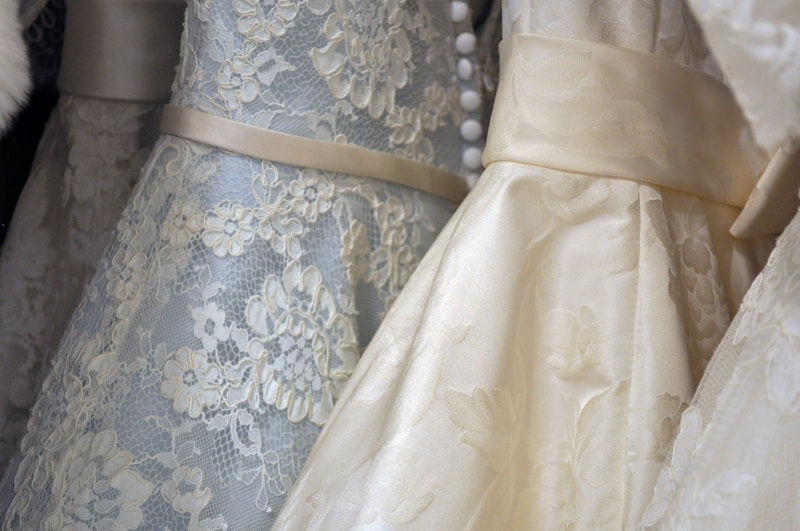The Allure of Artistic Lace Appliqué: A Comprehensive Guide
Understanding Artistic Lace Appliqué
Artistic lace appliqué is a stunning textile embellishment technique that incorporates delicate lace into various fabric designs. This time-honored craft has evolved over the years, blending traditional methods with modern aesthetics. In this article, we’ll delve deep into the world of artistic lace appliqué, its history, techniques, and how to incorporate it into your next project.
What is Artistic Lace Appliqué?
At its core, artistic lace appliqué involves sewing or attaching lace pieces onto a base fabric to create intricate designs and patterns. This technique can be found in garments, home décor, and various accessories. The beauty of artistic lace appliqué lies in its versatility; it can range from subtle embellishments to bold, statement-making designs.
Historical Background
The origins of lace are steeped in history, with roots tracing back to the late 15th century in Europe. Initially, lace was handmade and crafted from fine threads which were painstakingly woven together. With time, lace-making saw industrial advancements, allowing for mass production while still retaining a sense of elegance and sophistication. Artistic lace appliqué became popular as a way to elevate garments and textiles, especially in haute couture fashion.
Types of Lace Used in Appliqué
When it comes to artistic lace appliqué, there are several types of lace that are commonly utilized. Each type brings its unique texture, style, and aesthetic appeal:
| Type of Lace | Description |
| Chantilly Lace | Characterized by its fine ground and intricate floral motifs, perfect for elegant dress designs. |
| Venise Lace | A heavier lace adorned with embroidery, often used for structures in garments and home textiles. |
| Alençon Lace | A needle lace with a floral pattern, known for its fine detail; ideal for Wedding dresses. |
| Apsley Lace | Fine lace with a vintage appeal, commonly used in accessories and embellishments. |
Techniques for Artistic Lace Appliqué
Creating beautiful lace appliqué requires specific techniques that can vary based on the project and desired outcome. Here are some methods to consider:
1. Preparation of Materials
Before you begin, gather all necessary materials: lace, base fabric, scissors, needle, and thread. Ensure that the lace is clean and free from any loose threads.
2. Designing Your Appliqué
Sketch your desired design on paper. This can help visualize how the lace will be applied to the base fabric. Consider using a fabric pen or chalk to outline the design on the fabric itself.
3. Attaching the Lace
Using a combination of hand sewing and machine sewing can achieve the best results. Hand sew the lace along the edges for a delicate finish, or use a sewing machine for sturdier attachment. Be mindful of the thread tension to avoid puckering.
4. Finishing Touches
Trim any excess lace carefully and consider applying a fabric stiffener to maintain the shape of your design. Press the appliqué gently with an iron to ensure it lays flat without damaging the lace.
Incorporating Artistic Lace Appliqué into Your Projects
Artistic lace appliqué can be integrated into various projects, from clothing to home décor. Here are some ideas to inspire you:
- Fashion Design: Use lace appliqué on dresses, blouses, or skirts to create unique, personalized clothing pieces.
- Wedding Decor: Incorporate lace appliqué into table linens, chair covers, or wedding invitations for a touch of elegance.
- Accessories: Create embellished bags, shoes, or hats by adding lace appliqué for a fashionable statement.
- Quilting: Use lace appliqué in quilt designs for added texture and dimension.
Maintenance of Lace Appliqué
To ensure your artistic lace appliqué remains in pristine condition, follow these care tips:
- Always hand wash lace appliqué items in cold water to avoid any damage.
- Use gentle detergents specifically formulated for delicate fabrics.
- Avoid wringing out the fabric; instead, lay flat to dry to maintain shape.
- Store lace pieces in a cool, dry place away from direct sunlight to prevent fading.
Common Questions Related to Artistic Lace Appliqué
For those looking to expand their knowledge or clear up any doubts, here are some common questions people may have regarding artistic lace appliqué:
- What fabric is best for lace appliqué? Fabrics such as cotton, polyester blends, and silks work well for lace appliqué projects.
- Can lace appliqué be applied to knit fabrics? While possible, extra care and precision are needed due to the stretchy nature of knit fabrics.
- How can I keep my appliqué from fraying? Use fray check solutions or carefully trim fabric edges to prevent fraying.
- Is lace appliqué suitable for beginners? Yes, with practice, beginners can successfully use lace appliqué to enhance their projects.

Conclusion: The Timeless Elegance of Artistic Lace Appliqué
Artistic lace appliqué is a captivating technique that offers endless possibilities for creativity and expression. Whether you're dressed in a beautifully adorned gown or decorating your home with lace accents, this skill not only enhances aesthetics but also connects us to a rich tradition of textile art. As you embark on your lace appliqué journey, keep the fundamental techniques in mind, practice diligently, and allow your creativity to flourish.
In conclusion, remember that practice makes perfect. Don't hesitate to experiment with different lace types and designs as you develop your style. Happy crafting!